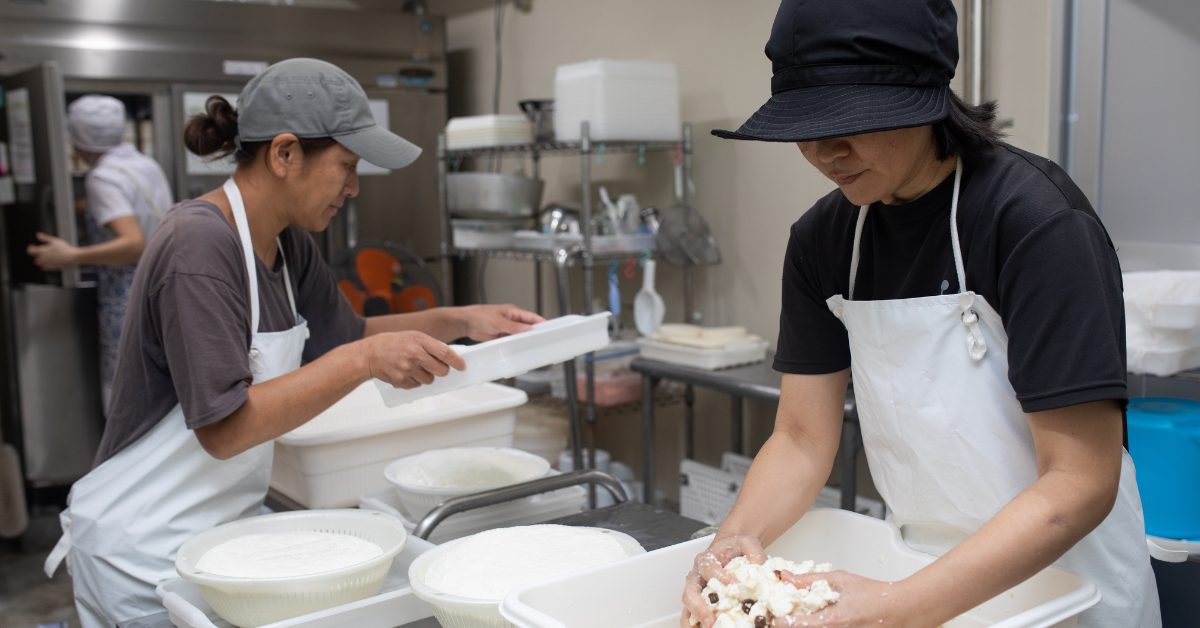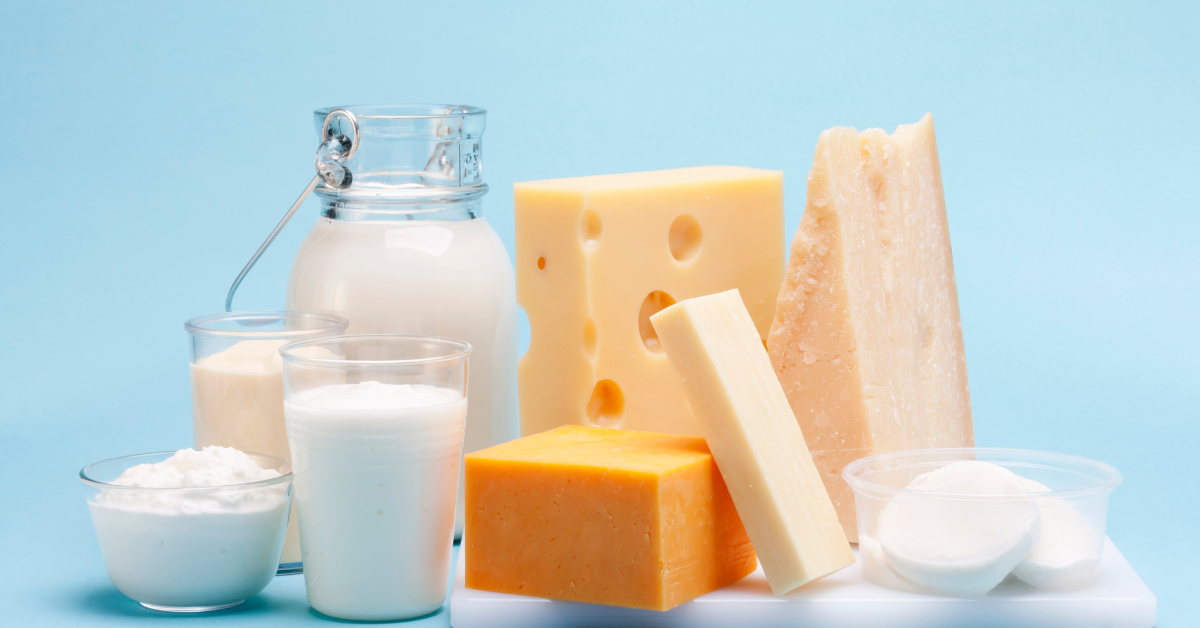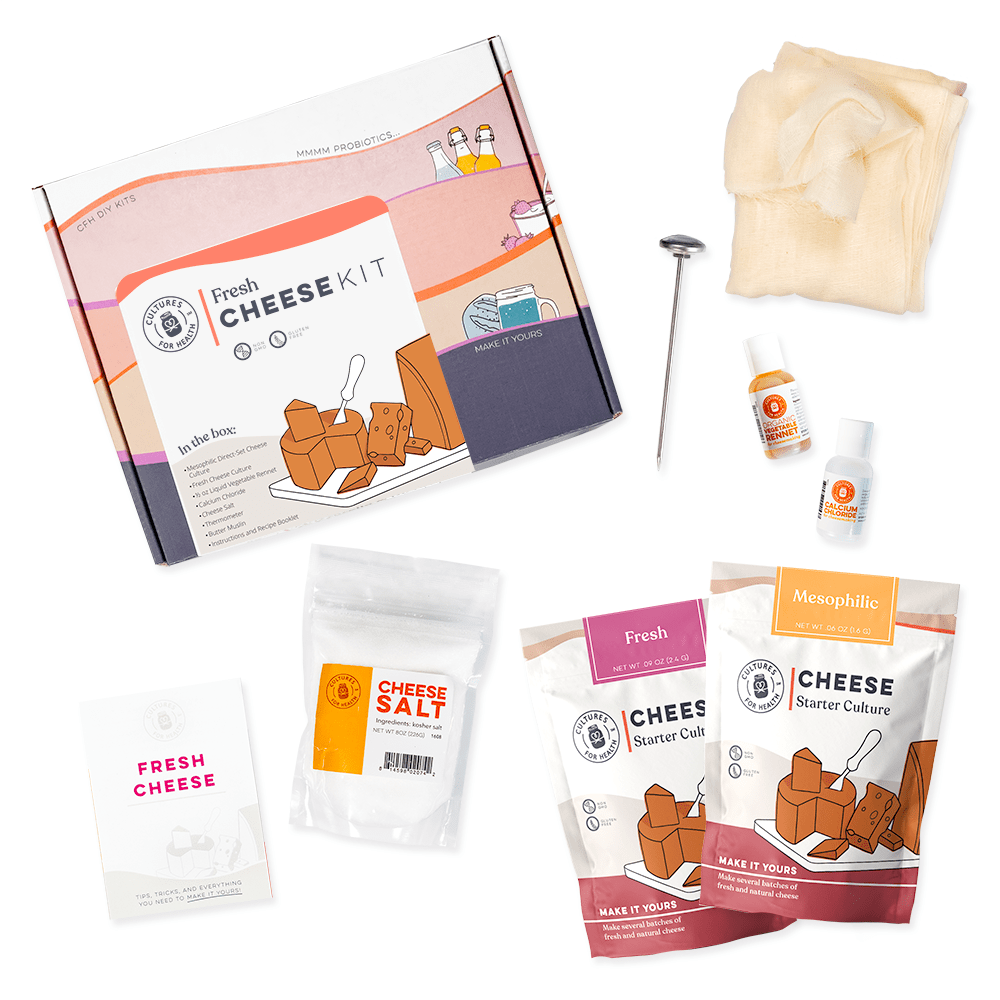
Cheese is one of the most popular and versatile foods on earth. But have you ever wondered how cheese is made? Well, obviously you need milk, but what else do you need to make cheese?
Cheese ingredients can vary based on the type of cheese; but generally, it all comes down to four main ingredients. In this article, we'll go over those basic ingredients for making cheese. We'll discuss what they are, why they're important, and how you can select them to create the perfect cheese recipe.
The Essential Ingredients for Cheese Making

As we said earlier, cheese making ingredients do vary from cheese to cheese. But there are some common cheese ingredients you can use in almost all cheeses. These ingredients include:
Milk
Milk is, of course, one of the most key ingredients for cheese making. The quality of your milk will affect the quality of your cheese.
Milk comes from a variety of animals, and depending on the animal, it can be used to make different kinds of cheeses. Cow's milk is most commonly used, but goat's milk is a close second. Sheep's milk and mare's milk are also used for cheesemaking, but rarely. Camels, yaks, and reindeer are all fair game for cheese aficionados as well.
The only type of milk that you should stay away from in cheesemaking is ultra-pasteurized or ultrahigh-temperature pasteurized milk. This milk has been so highly processed that it will not produce a satisfactory curd.
Note:While cheeses can be made from any type of animal milk, some types yield better results than others. The best results will be obtained from whole, unhomogenized milk. So if you're going to make cheese at home and have access to it, look for whole milk from grass-fed animals if possible.
Starter Cultures
Starter cultures are used to help kickstart the fermentation process. They are a specific group of bacteria that you add to warmed milk. The bacteria feed off sugars present in milk and convert them into lactic acid. The bacteria also help alter the milk's pH level, making it perfect for growing good bacteria and developing flavor.
The starter culture is what gives the cheese its distinct taste and texture. There are hundreds of different types of cheese cultures for making cheese. The starter culture you use will affect the final taste and texture of your cheese. Some cheese cultures create holes in cheese, such as those in Swiss cheese, while others help produce specific flavors.
However, all cheese cultures can usually be divided into two main groups depending on their temperature preferences: mesophilic and thermophilic.
Mesophilic starters prefer temperatures around 86 degrees Fahrenheit. In contrast, thermophilic starters prefer higher temperatures, around 108 degrees Fahrenheit.
Note: If you want to know more about starter cultures for cheese making, consider reading our article “A Complete Guide To Cheese Starter Cultures.” We think it will be very helpful for you to understand how starter cultures impact the taste and texture of your final cheese.
Coagulant
Coagulants help your milk curdle and separate into curds (the solid part) and whey (the liquid part). They are added after the culturing of the milk. Some common types of coagulants include rennet, citric acid, vinegar, and lemon juice.
The most common coagulant for making cheese is rennet. It's a naturally occurring enzyme called renin. It can be found in the stomach lining of young cattle.
Vegetarian rennet substitutes are also available. They are made from safflower seeds, thistles, or figs.
Different coagulants can be used for different cheeses, but most will require rennet.
Animal rennet can be purchased in tablet or liquid form. The liquid is easier to work with and usually works faster within the milk. But rennet tablets can be found easily and inexpensively at most grocery stores and have a longer shelf life.
Salt
Salt is one of the most basic ingredients in cheese making, and for good reason. It has many important functions in cheese and helps it develop its final flavor and texture.
Salt can be added to fresh curds before pressing to help draw moisture from them, making them shrink and become firmer. It's also used as part of a salt brine after pressing to keep your cheese from spoiling. Salt also helps inhibit the growth of undesirable bacteria during the aging process.
That being said, it’s essential to use salt with no iodine in it, as iodine kills the lactic bacteria during the aging process. Purchasing cheese salt is the easiest way to ensure your cheese turns out the way you want.
Types of Milk Used in Cheese Making

Different animals produce different types of milk, which also means that different types of cheeses can be made from these various milks. For example, goat's milk results in a stronger-tasting, less creamy cheese than cow's milk. Here are a few types of milk used in cheese making and what each one contributes to a cheese's overall flavor:
Cow's Milk
This is the most common type of milk used in cheese making and has a slight hint of sweetness. Cow's milk contains plenty of proteins and fats, which give it a rich, creamy texture. It has 87.7% water, 4.9% carbohydrates (lactose), 3.4% fat, and 3.3% protein.
Goat's Milk
Goat's milk has a higher fat content than cow's milk. It also has smaller fat globules than cow's milk, which makes it easier to digest. Goat's milk has 86.8% water, 4.3% carbohydrate (lactose), 4.5% fat, and 3.6% protein.
Goat's milk has an earthy taste, rather than sweet like cow's milk. It is often used for making soft cheeses such as Brie and chèvre (goat).
Sheep's Milk
Sheep milk is rich, golden, and fatty. It has a musky sheep flavor that can be softened by chilling, but not eliminated. Sheep's milk has 82% water, 6.5% fat, 4.5% lactose, and 5.5% protein. That's richer than even Jersey cow milk!
Some of the world's best cheeses are made from sheep’s milk (like homemade feta cheese, for example), because of its richness and complexity of flavor.
Enhancing the Flavor of Cheese: The Use of Salt, Herbs, and Spices in Cheese Making
Now that you know the four basic cheese ingredients, let's look at some additional ingredients that you can use to make your cheese more flavorful. In fact, there are many ways to enhance the flavor of cheese. Here are some of our favorite ways to add more pizzazz to a basic cheese:
Cheese Salt
Cheese salt is the simplest way to give your cheese a boost of flavor. It also reduces bitterness and improves texture by helping the curd set more quickly. Add just a pinch or two and see how it improves!
Herbs and Spices
Herbs and spices are a great way to add flavor without adding fat or calories. You can use fresh or dried herbs and spices, depending on what you're making. Some of our favorites include basil, thyme, oregano, parsley, garlic powder, dill, or chives.
Spices and herbs can be added directly to the curds, but you can mix them in at any point of cheese making. They can also be added to the milk before it is heated and coagulated, or sprinkled on top of the finished cheese.
Annatto

This is a natural coloring agent that adds a red hue to the cheese and gives it an earthy, slightly bitter flavor.
Calcium Chloride
Some types of milk have calcium levels that aren't consistent with cheesemaking. Pasteurized and cold-stored milk has calcium that can become soluble in water once the milk begins to heat up, which prevents the formation of a solid curd during the cheesemaking process.
Adding calcium chloride re-introduces calcium and lipids into the mix to help bring balance back to the protein structure of the milk. The result is a stabler and firmer curd.
Citric Acid and Tartaric Acid
Some cheeses, like ricotta and mozzarella, use natural acids instead of rennet to form the curds. The two most common acids for this purpose are citric acid and tartaric acid, which are added to the milk before heating it up. These natural acids help break down the molecules in milk, which otherwise would create a weak curd.
The Art of Cheese Making: Experimenting with Ingredients to Create Delicious Dairy Treats
To sum up, cheese is made with four basic cheese ingredients: milk, starter culture, coagulant, and salt. How these ingredients are combined determines how strong or mild the flavor will be.
You can control how strong or mild your cheese tastes by adding ingredients that make it stronger or milder (like different herbs and spices), aging it for longer periods of time, aging it in different environments, and more.
So why not play around with your own cheese creations to see what kinds of things you can come up with? You'll be surprised how much fun this hobby can be!
Fresh Cheese Making Kit
Our cheese making kits can help you get started with your cheese journey. Our cheese kits include the ingredients, equipment, and recipes you need to make delicious cheeses at home.
With these kits, you can easily make any type of cheese, including our personal favorite, kefir cheese.
Related Source:



















